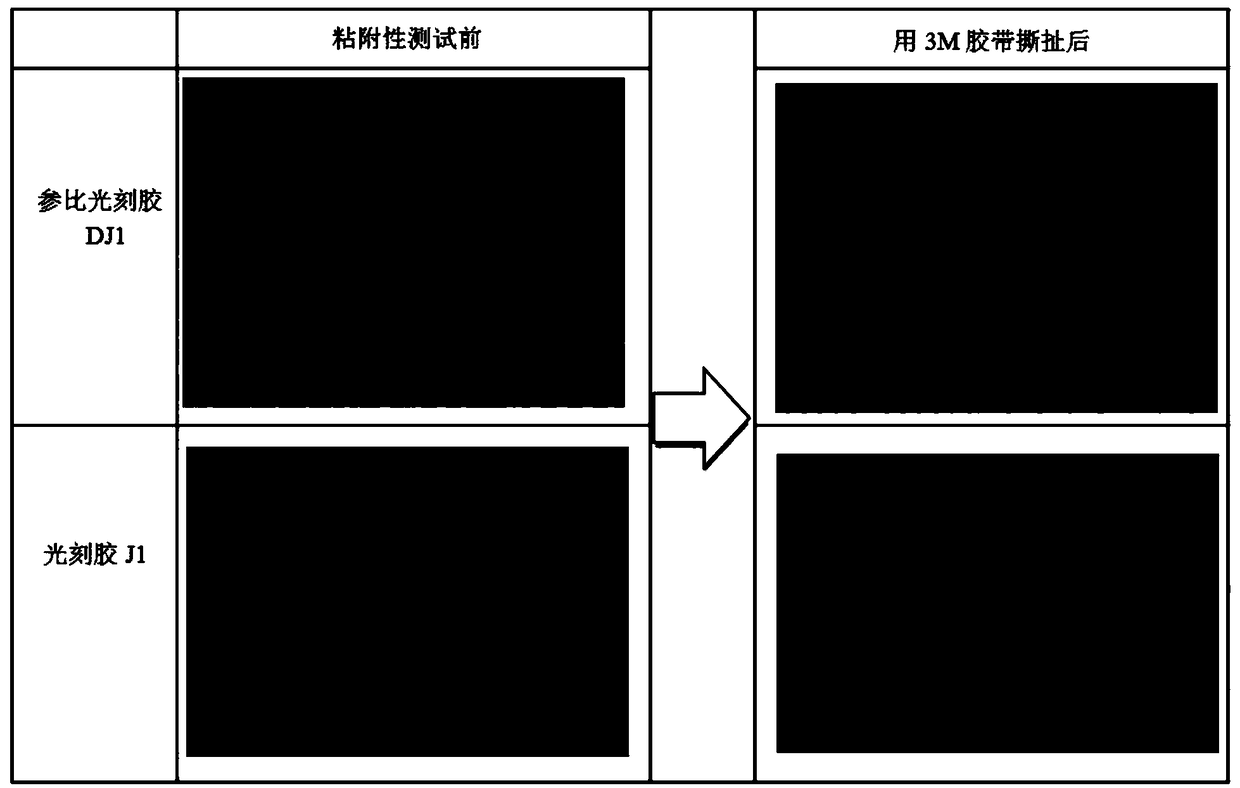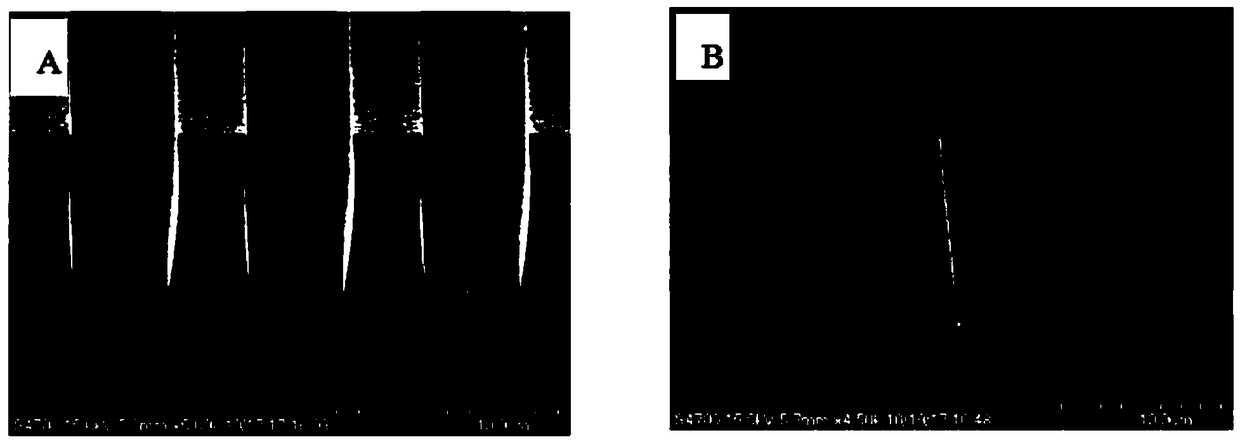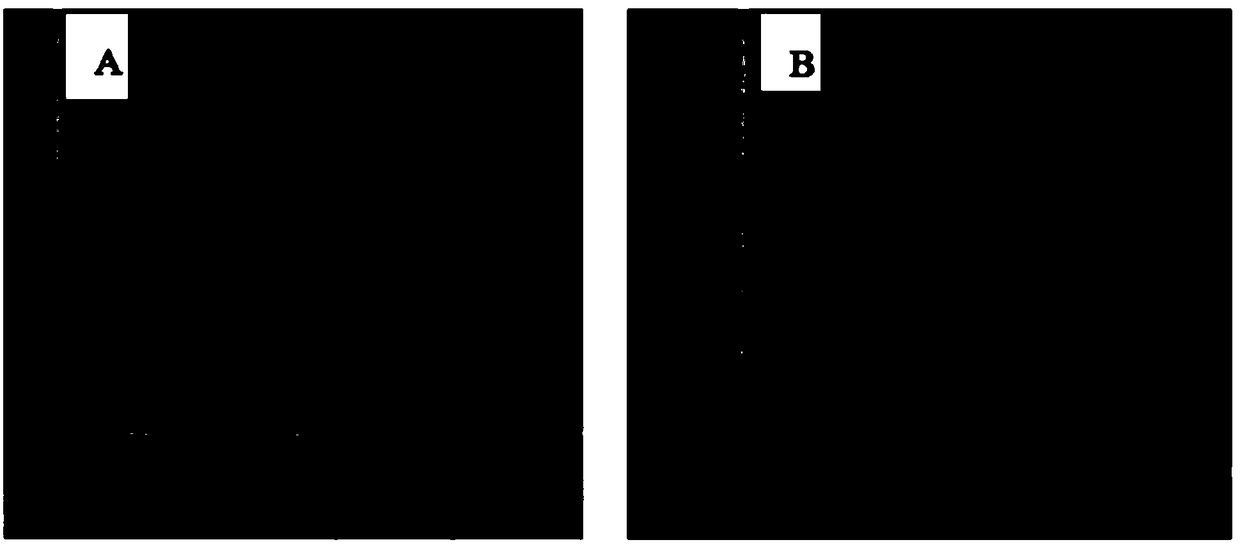A photoresist, a preparation method and application thereof, and a photolithography method
A photoresist and photolithography technology, which is applied in the direction of photomechanical equipment, optics, photosensitive material processing, etc., can solve the problem of poor adhesion between photoresist and substrate surface, and insufficient photoresist to block deep groove etching. Corrosion, insufficient light transmittance and other problems
- Summary
- Abstract
- Description
- Claims
- Application Information
AI Technical Summary
Problems solved by technology
Method used
Image
Examples
Embodiment 1
[0040] This example is used to illustrate the preparation method of the ternary copolymerization photoresist resin provided by the present invention.
[0041] The resin is a copolymer prepared by copolymerization of comonomers in a solvent in the presence of a free radical initiator. The comonomers are composed of the following compounds in parts by weight: monomer I 28.6g, monomer I Body II 50.0g, monomer III 22.4g. The polymerization reaction formula is as follows:
[0042]
[0043] Preparation method: Add 28.6g of monomer I, 50.0g of monomer II, 22.4g of monomer III and 250g of tetrahydrofuran into a 500ml three-necked flask, and pass nitrogen gas for ten minutes under stirring conditions, then heat to 65°C, drop in 10 minutes Add 54.0g azobisisobutyrocyanide solution (4 gram azobisisobutyrocyanide is dissolved in 50 gram tetrahydrofuran), continue to react after 6 hours, reaction product deprotection, obtain final product, its weight-average molecular weight is 28200, ...
Embodiment 2
[0045] This example is used to illustrate the preparation method of the ternary copolymerization photoresist resin provided by the present invention.
[0046] The resin is a copolymer prepared by copolymerization of comonomers in a solvent in the presence of a free radical initiator. The comonomers are composed of the following compounds in parts by weight: monomer I 28.5g, monomer I Body II 58.0g, monomer III 13.5g. The polymerization reaction formula is as follows:
[0047]
[0048]Preparation method: Put 28.5g of monomer I, 58.0g of monomer II, 13.5g of monomer III and 250g of tetrahydrofuran in a 500ml three-necked flask. 54.0g azobisisobutyronitrile solution (4 gram azobisisobutyrocyanide is dissolved in 50 gram tetrahydrofuran), continue to react after 20 hours, reaction product deprotection, obtain final product, its weight-average molecular weight is 25400, molecular weight distribution is 1.9.
Embodiment 3
[0050] This example is used to illustrate the preparation method of the quaternary copolymerization photoresist resin provided by the present invention.
[0051] The resin is a copolymer prepared by copolymerization of comonomers in a solvent in the presence of a free radical initiator. The comonomers are composed of the following compounds in parts by weight: monomer I 35.5g, monomer I Body II 40.0g, monomer III (with the structure shown in formula (3), wherein, R 3 is methyl, R 4 for X is hydrogen) 12.0g, monomer III (with the structure shown in formula (3), wherein, R3 is methyl, R 4 for X is methyl) 12.5g. The polymerization reaction formula is as follows:
[0052]
[0053] Preparation method: Add 35.5g of monomer I, 40.0g of monomer II, 12.0g of monomer III, 12.5g of monomer III and 250g of tetrahydrofuran into a 500ml three-necked flask, and pass nitrogen gas for ten minutes under stirring conditions, and then heat to 70 ℃, 54.0g of azobisisobutyronitrile solu...
PUM
| Property | Measurement | Unit |
|---|---|---|
| Thickness | aaaaa | aaaaa |
| Thickness | aaaaa | aaaaa |
Abstract
Description
Claims
Application Information
 Login to View More
Login to View More - R&D
- Intellectual Property
- Life Sciences
- Materials
- Tech Scout
- Unparalleled Data Quality
- Higher Quality Content
- 60% Fewer Hallucinations
Browse by: Latest US Patents, China's latest patents, Technical Efficacy Thesaurus, Application Domain, Technology Topic, Popular Technical Reports.
© 2025 PatSnap. All rights reserved.Legal|Privacy policy|Modern Slavery Act Transparency Statement|Sitemap|About US| Contact US: help@patsnap.com



